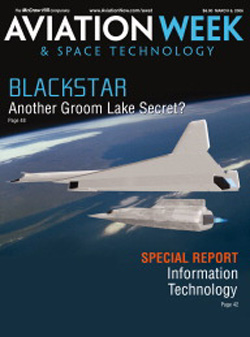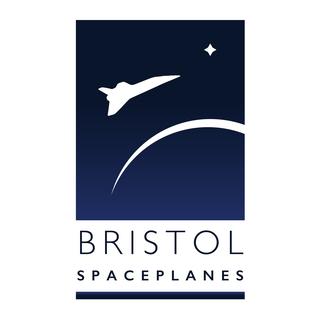
The aerospike engine is a type of rocket engine that maintains its aerodynamic efficiency across a wide range of altitudes. It belongs to the class of altitude compensating nozzle engines. Aerospike engines were proposed for many single-stage-to-orbit (SSTO) designs. They were a contender for the Space Shuttle main engine. However, as of 2023 no such engine was in commercial production, although some large-scale aerospikes were in testing phases.
Human spaceflight programs have been conducted, started, or planned by multiple countries and companies. Until the 21st century, human spaceflight programs were sponsored exclusively by governments, through either the military or civilian space agencies. With the launch of the privately funded SpaceShipOne in 2004, a new category of human spaceflight programs – commercial human spaceflight – arrived. By the end of 2022, three countries and one private company (SpaceX) had successfully launched humans to Earth orbit, and two private companies had launched humans on a suborbital trajectory.

A reusable launch vehicle has parts that can be recovered and reflown, while carrying payloads from the surface to outer space. Rocket stages are the most common launch vehicle parts aimed for reuse. Smaller parts such as rocket engines and boosters can also be reused, though reusable spacecraft may be launched on top of an expendable launch vehicle. Reusable launch vehicles do not need to make these parts for each launch, therefore reducing its launch cost significantly. However, these benefits are diminished by the cost of recovery and refurbishment.

A spaceplane is a vehicle that can fly and glide like an aircraft in Earth's atmosphere and maneuver like a spacecraft in outer space. To do so, spaceplanes must incorporate features of both aircraft and spacecraft. Orbital spaceplanes tend to be more similar to conventional spacecraft, while sub-orbital spaceplanes tend to be more similar to fixed-wing aircraft. All spaceplanes to date have been rocket-powered for takeoff and climb, but have then landed as unpowered gliders.

The Lockheed Martin X-33 was a proposed uncrewed, sub-scale technology demonstrator suborbital spaceplane that was developed for a period in the 1990s. The X-33 was a technology demonstrator for the VentureStar orbital spaceplane, which was planned to be a next-generation, commercially operated reusable launch vehicle. The X-33 would flight-test a range of technologies that NASA believed it needed for single-stage-to-orbit reusable launch vehicles, such as metallic thermal protection systems, composite cryogenic fuel tanks for liquid hydrogen, the aerospike engine, autonomous (uncrewed) flight control, rapid flight turn-around times through streamlined operations, and its lifting body aerodynamics.

Private spaceflight refers to spaceflight activities undertaken by non-governmental entities, such as corporations, individuals, or non-profit organizations. This contrasts with public spaceflight, which is traditionally conducted by government agencies like NASA, ESA, or JAXA.

XCOR Aerospace was an American private spaceflight and rocket engine development company based at the Mojave Air and Space Port in Mojave, California, Midland International Air and Spaceport in Midland, Texas and the Amsterdam area, the Netherlands. XCOR was formed in 1999 by former members of the Rotary Rocket rocket engine development team, and ceased operations in 2017.

PlanetSpace was a privately funded Chicago-based rocket and space travel project founded by Geoff Sheerin, CEO of the Canadian Arrow corporation. The owner was Dr. Chirinjeev Kathuria.

Blackstar is the reported code-name of a secret United States orbital spaceplane system. The possible existence of the Blackstar program was reported in March 2006 by Aviation Week & Space Technology magazine; the magazine reported that the program had been underway since at least the early 1990s, and that the impetus for Blackstar was to allow the United States government to retain orbital reconnaissance capabilities jeopardized following the 1986 Challenger disaster. The article also said that the United States Air Force's Space Command was unaware of Blackstar, suggesting it was operated by an intelligence agency such as the National Reconnaissance Office.

Reaction Engines Limited is a British aerospace manufacturer based in Oxfordshire, England.

The XCOR Lynx was a proposed suborbital horizontal-takeoff, horizontal-landing (HTHL), rocket-powered spaceplane that was under development by the California-based company XCOR Aerospace to compete in the emerging suborbital spaceflight market. The Lynx was intended to carry one pilot, a ticketed passenger, and/or a payload above 100 kilometres (62 mi) altitude. The concept was under development since 2003, when a two-person suborbital spaceplane was announced under the name Xerus.
Aircraft have different ways to take off and land. Conventional airplanes accelerate along the ground until reaching a speed that is sufficient for the airplane to takeoff and climb at a safe speed. Some airplanes can take off at low speed, this being a short takeoff. Some aircraft such as helicopters and Harrier jump jets can take off and land vertically. Rockets also usually take off vertically, but some designs can land horizontally.
The DARPA XS-1 was an experimental spaceplane/booster with the planned capability to deliver small satellites into orbit for the U.S. Military. It was reported to be designed to be reusable as frequently as once a day, with a stated goal of doing so for 10 days straight. The XS-1 was intended to directly replace the first stage of a multistage rocket by taking off vertically and flying to hypersonic speed and high suborbital altitude, enabling one or more expendable upper stages to separate and deploy a payload into low Earth orbit. The XS-1 would then return to Earth, where it could ostensibly be serviced fast enough to repeat the process at least once every 24 hours.

Firefly Aerospace is an American private aerospace firm based in Cedar Park, Texas, that develops launch vehicles for commercial launches to orbit. The company completed its $75 million Series A investment round in May 2021, which was led by DADA Holdings. The current company was formed when the assets of the former company Firefly Space Systems were acquired by EOS Launcher in March 2017, which was then renamed Firefly Aerospace. Firefly's stated purpose is to increase access to space, similar to other private spaceflight companies.

Bristol Spaceplanes (BSP) is a British aerospace company based in Bristol, England, who has designed a number of spaceplanes with sub-orbital and orbital capabilities. The company's stated goal is "to realise low-cost access to space", primarily through reusable launch vehicles, claiming the cost of human space travel has the potential to be reduced by a factor of 1,000.

Saenger or Sänger was a West German concept design for a two-stage-to-orbit spaceplane. It is named after Eugen Sänger, who had been a key figure in the development of the concept for aerospace company Junkers.

The Space Rider is a planned uncrewed orbital lifting body spaceplane aiming to provide the European Space Agency (ESA) with affordable and routine access to space. Contracts for construction of the vehicle and ground infrastructure were signed in December 2020. Its maiden flight is currently scheduled for the third quarter of 2025.
The Chinese reusable experimental spacecraft is the first reusable spacecraft produced by China. It embarked upon its initial orbital mission on 4 September 2020. According to media reports, the CSSHQ is launched into Earth orbit in a vertical configuration while enclosed within the payload fairings of a rocket like a traditional satellite or space capsule, but it returns to Earth via a runway landing like a conventional aircraft; the landing is conducted autonomously. In the absence of any official descriptions of the spacecraft or photographic depictions thereof, some observers have speculated that the CSSHQ may resemble the X-37B spaceplane of the United States in both form and function.
Launcher was an American aerospace company based in Hawthorne, California. It was founded in New York City in 2017 by Max Haot.














